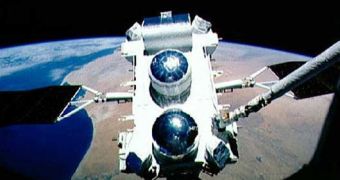The Compton Gamma Ray Observatory was somewhat the equivalent of the Hubble Telescope almost a decade ago, in terms of searching for gamma-ray bursts, the most immense blasts ever detected in the vastness of space, from 1991 to 2000. Sadly, in June 2000, following a major glitch of the device, NASA decided to retire it, much to the public’s (and scientists') dismay (some experts even indicated that the machine was still operational up to some extent).
This decision came in as even more of a blow to Jim Ryan, a specialist who had continuously worked on the Observatory since 1984 and was very fond of it. Still, his state of mind was consistently improved after the Department of Defense asked him to try to adapt his research in order to help national security. Then, he had a brilliant idea – that the remains of the deceased Compton Gamma Ray Observatory might prove useful in detecting emissions of "dirty bombs" (or "radiological dispersal devices," as they're also known).
A successful dirty bomb conflagration is not known to have happened yet (although attempts are known to have been prevented), but there is a wide series of speculations on the results of such an event. It would certainly cause a massive disruption to a populated place, mainly due to its little amount of radioactive material required, its cheapness and easiness to build. Besides the obvious effects of the explosion and those of the radioactive material, the main impact would be psychological, studies show.
First, Ryan, who was working at the University of New Hampshire's Space Science Center at the time, namely on a device that would make it to Mercury's orbit and detect Sun-emitted low energy neutrons from there, figured out that the energy range of the neutrons matched that of the plutonium emission in nuclear weapons.
Later on, he realized that he could adapt the parts of the observatory in order to accurately detect and pinpoint the emission of dirty bombs' radiation from a safe distance, unlike Geiger detectors. "It lives on and does something that is useful to society as well as pure academic science," shared Ryan during a presentation at a Homeland Security conference, as quoted by Universe Today. "[It is] poetic justice," he said, that spacecraft's technology would help combat international terrorism.

 14 DAY TRIAL //
14 DAY TRIAL //